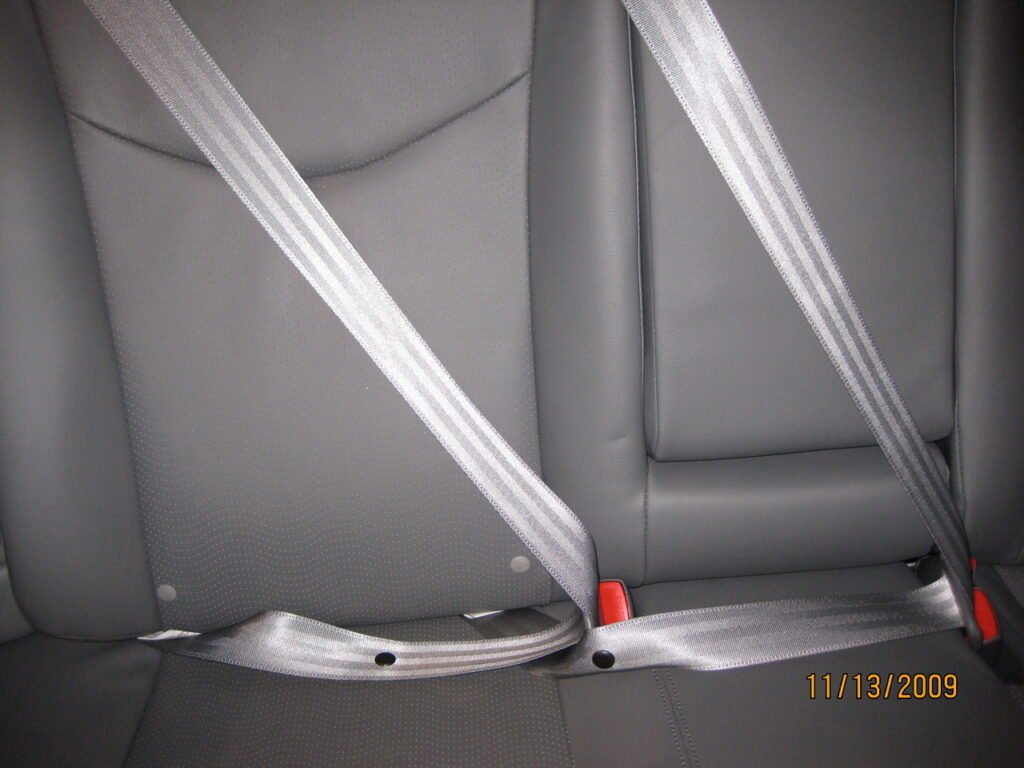In this regular column, SRN shares vehicle-related information from Katrina Rose, SRN collaborator and vehicle liaison for the LATCH Manual. For this issue, Katrina shares answers to a question many CPSTs have wondered about regarding vehicle seat belts.
Question: In certification class, I didn’t learn about these…things…on seat belts, but now I am seeing them every time I try to install a car seat because they are constantly in the way! What are these?
Katrina: Vehicle manufacturers use a variety of names to describe these seat belt features; at SRN, we call them “latchplate stops.” This name explains their purpose, which is to stop a latchplate from sliding away so it can be found in the same position every time an occupant buckles up. Since gravity pulls the latchplate on an unused lap-shoulder belt downward, a latchplate stop is helpful because the latchplate can slide only until the latchplate stop is reached; when a stop isn’t there, a latchplate tends to slide too low and may even go under the seat cushion—a problem that contributed to seat belt nonuse in cars that predated this feature.
Latchplate stops can be anything a latchplate can’t slide over, but the main types are a pad or loop of webbing sewn onto the seat belt (shown right) and a plastic button punched into the webbing (shown below). Their location on a seat belt (higher or lower) also varies greatly among vehicle models—and even among the belts in the same vehicle. Since vehicles come from the factory with these features, the manufacturer ensures the belt meets FMVSS 209, regardless of the feature’s design. Because altering a seat belt can damage it, owners and CPSTs should not make a homemade latchplate stop or attempt to remove one that came with the vehicle.
This latter prohibition can be particularly frustrating for CPSTs since Murphy’s Law seems to apply: If a CR has a belt-tensioning and/or lock-off feature, a seat belt’s latchplate stop will inevitably line up with this feature and prevent it from working properly. Of course, that’s not always true, but this maddening problem does seem to occur frequently. When it does, check with the CR manufacturer (many offer alternative instructions for installation when this problem arises), install using the LA attachment, or try a different seating position.




